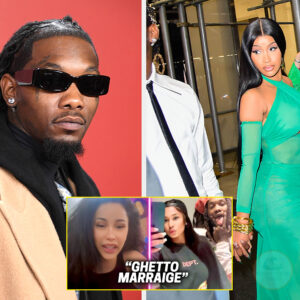In recent weeks, the basketball community has been rocked by an incident involving Caitlyn Clark, a rising star in the WNBA, and the subsequent fallout that has raised serious questions about player conduct and league accountability. The events surrounding a playoff game between the Connecticut Sun and Indiana Fever have not only highlighted on-court aggression but have also exposed a troubling dynamic off the court, prompting calls for a reevaluation of how the WNBA addresses player behavior.
During a high-stakes playoff game, a confrontation between Clark and Dejon Carrington of the Connecticut Sun led to a disturbing eye injury for Clark. In what appeared to be a rough play, Carrington’s fingernails scratched Clark’s eye, resulting in a painful black eye that left fans and analysts questioning the intent behind the action. While injuries are not uncommon in a physical sport like basketball, the video footage of the incident raised eyebrows, showing Carrington’s hand turning sharply, seemingly targeting Clark’s face rather than merely swatting for the ball.
Despite the severity of the incident, the referees did not issue a foul, and the league’s silence on the matter has only fueled the controversy. In the aftermath, Carrington claimed ignorance of the impact of her actions, a statement many found hard to believe given the clear evidence.
The situation escalated further when Carrington and Nelissa Smith, Clark’s teammate, took to Instagram Live to mock the incident. Their lack of remorse and willingness to turn a painful moment into a source of amusement drew widespread condemnation. Rather than supporting Clark, Smith’s participation in the ridicule was seen as an act of betrayal, leading many to question her loyalty and judgment.

Smith’s decision to side with Carrington instead of defending her teammate has sparked outrage. Critics argue that this behavior not only undermines the spirit of teamwork but also promotes a culture of bullying within the league. The WNBA’s inaction in addressing these incidents has been particularly concerning, as it sends a message that such behavior may be tolerated.
LeBron James, a vocal supporter of Clark, emphasized her significance to the WNBA, referring to her as the “heartbeat” of the league. Despite his acknowledgment of Clark’s impact, the WNBA’s response—or lack thereof—to the situation has been disappointing for many fans. The league’s silence in the face of bullying and aggression raises questions about its priorities and commitment to protecting its players.
As discussions about player conduct continue, the need for a clear stance from the WNBA becomes more pressing. The absence of disciplinary action against Carrington and Smith has left many feeling that the league is failing to uphold the integrity of the sport.
The controversy surrounding Clark is not an isolated incident. Observers have noted a troubling trend of hostility directed at her from other players, including Angel Reese and Kennedy Carter. Some commentators have suggested that this targeting stems from jealousy or insecurity within the league, particularly among players who may feel overshadowed by Clark’s talent and rising popularity.
As the narrative unfolds, it’s crucial to examine how competition can sometimes devolve into personal attacks. Clark’s fierce competitive spirit and her ability to draw fans to the WNBA are undeniable; however, the increasing hostility directed toward her raises concerns about the league’s culture.
The Caitlyn Clark saga highlights the need for the WNBA to take a stand against bullying and unprofessional conduct among its players. Implementing clear policies regarding player behavior and establishing consequences for actions that undermine the integrity of the sport could help create a more respectful and supportive environment.
As the league grapples with these issues, the ongoing dialogue among fans, players, and analysts is vital. Caitlyn Clark’s impact on the WNBA cannot be understated, and it is essential that the league not only protects its stars but also fosters a culture that celebrates competition without crossing the line into aggression and personal attacks.
In this pivotal moment, the WNBA has the opportunity to address these challenges head-on and ensure that its players, especially emerging stars like Clark, can thrive in a safe and respectful environment.
Relative Articles
None found





